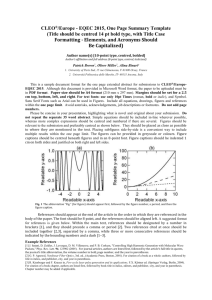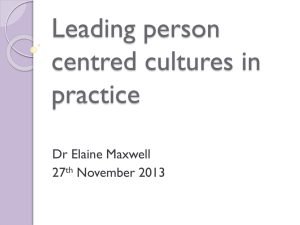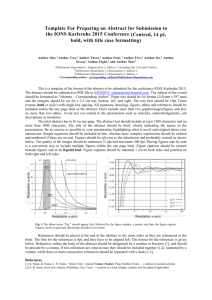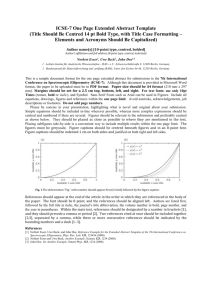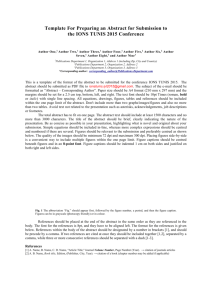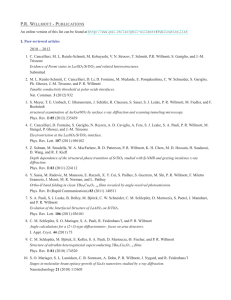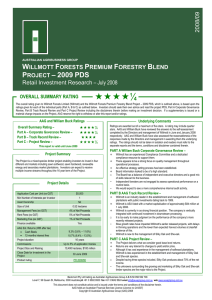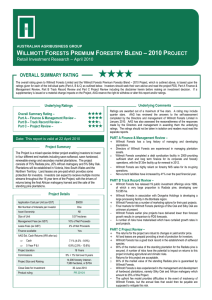young+willmott - SociologyRotherham
advertisement
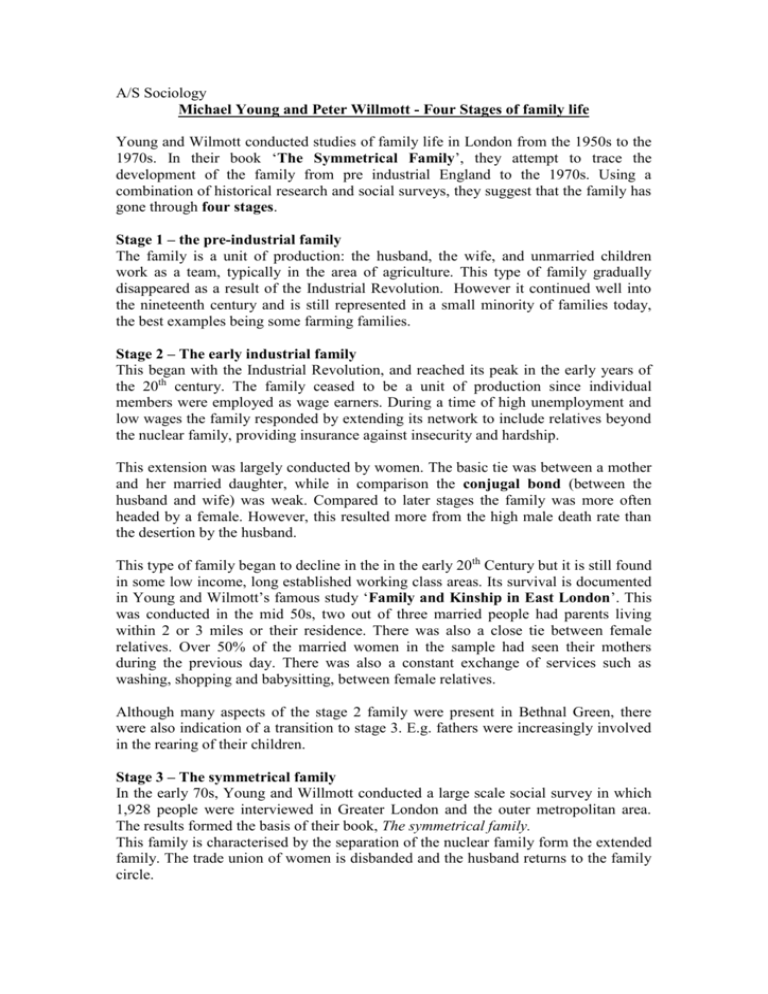
A/S Sociology Michael Young and Peter Willmott - Four Stages of family life Young and Wilmott conducted studies of family life in London from the 1950s to the 1970s. In their book ‘The Symmetrical Family’, they attempt to trace the development of the family from pre industrial England to the 1970s. Using a combination of historical research and social surveys, they suggest that the family has gone through four stages. Stage 1 – the pre-industrial family The family is a unit of production: the husband, the wife, and unmarried children work as a team, typically in the area of agriculture. This type of family gradually disappeared as a result of the Industrial Revolution. However it continued well into the nineteenth century and is still represented in a small minority of families today, the best examples being some farming families. Stage 2 – The early industrial family This began with the Industrial Revolution, and reached its peak in the early years of the 20th century. The family ceased to be a unit of production since individual members were employed as wage earners. During a time of high unemployment and low wages the family responded by extending its network to include relatives beyond the nuclear family, providing insurance against insecurity and hardship. This extension was largely conducted by women. The basic tie was between a mother and her married daughter, while in comparison the conjugal bond (between the husband and wife) was weak. Compared to later stages the family was more often headed by a female. However, this resulted more from the high male death rate than the desertion by the husband. This type of family began to decline in the in the early 20th Century but it is still found in some low income, long established working class areas. Its survival is documented in Young and Wilmott’s famous study ‘Family and Kinship in East London’. This was conducted in the mid 50s, two out of three married people had parents living within 2 or 3 miles or their residence. There was also a close tie between female relatives. Over 50% of the married women in the sample had seen their mothers during the previous day. There was also a constant exchange of services such as washing, shopping and babysitting, between female relatives. Although many aspects of the stage 2 family were present in Bethnal Green, there were also indication of a transition to stage 3. E.g. fathers were increasingly involved in the rearing of their children. Stage 3 – The symmetrical family In the early 70s, Young and Willmott conducted a large scale social survey in which 1,928 people were interviewed in Greater London and the outer metropolitan area. The results formed the basis of their book, The symmetrical family. This family is characterised by the separation of the nuclear family form the extended family. The trade union of women is disbanded and the husband returns to the family circle. Life is largely home centred, particularly when children are young, leisure is mainly home based (watching television). The conjugal bond is strong, the husband and wife increasingly share their work. Conjugal roles although not the same – wives still have the responsibility for raising children – are symmetrical. They are similar in terms of contributions made by each spouse to the running of the household. They share chores, decisions etc. Reasons for the rise in the symmetrical family: 1. Reduced need for kinship based mutual aid. 2. Increasing geographical mobility 3. Reduction in the number of children in the family allows women to work. 4. Husband drawn closer into the home due to increasing comfort, better amenities, and a greater range of home entertainment. Young and Willmott found that the home centred symmetrical family was more typical of the working class. Members of the working class are less fully work centred and focus is centred on family life. The nature of work is therefore central to family life. Principle of Stratified Diffusion Young and Willmott claim that this theory accounts for much of the change in family life. It means that what the top of the stratification system does today, the bottom will do tomorrow. Lifestyles, patterns of consumption, attitudes and expectations with diffuse from the top to the bottom. Stage 4 ? Applying this principle of Stratified Diffusion in 1973, Young and Willmott examine the family life of managing directors, who are work centred, leisure activities are less home centred and are less likely to involve their wives. The family was more asymmetrical. Young and Willmott suggest that changes in technology and the reduction in routine work may result in the stage 4 family becoming more common throughout the stratification system. People may become more work centred and less home centred. Young and Willmott predict that the asymmetrical family represents the next major development. How can you criticise this study?
